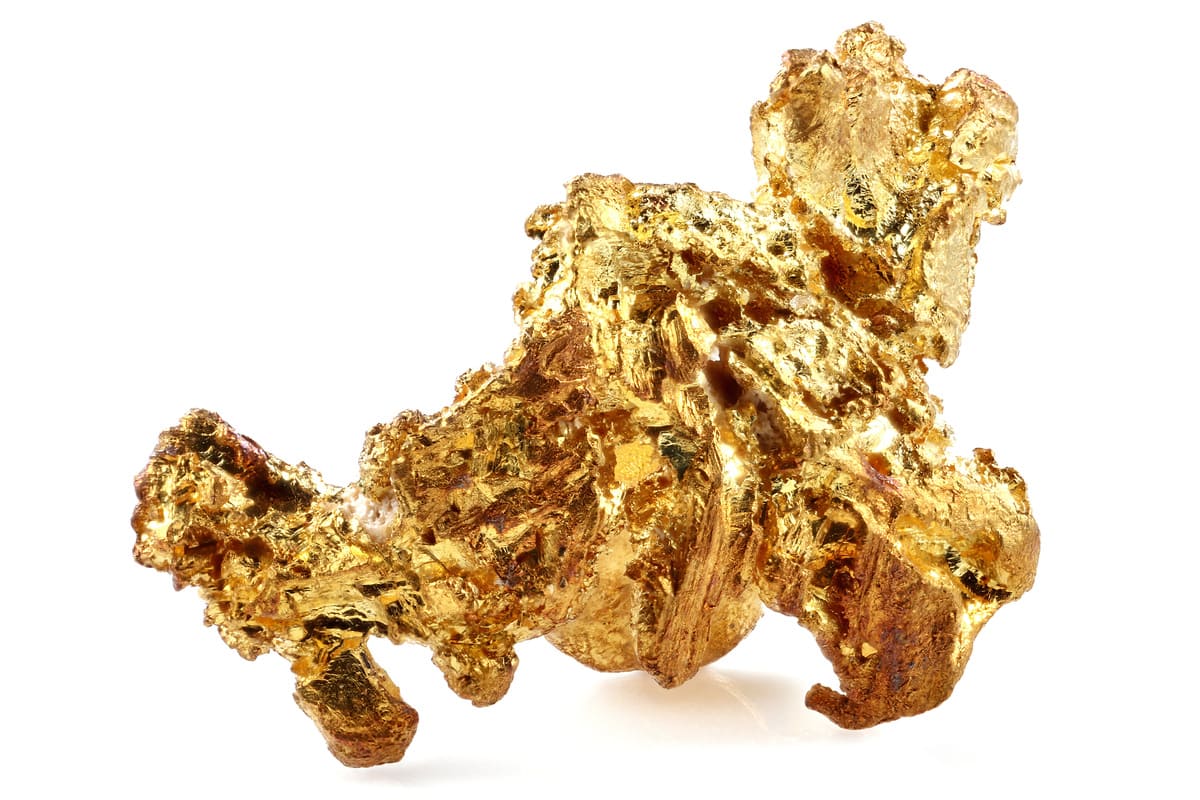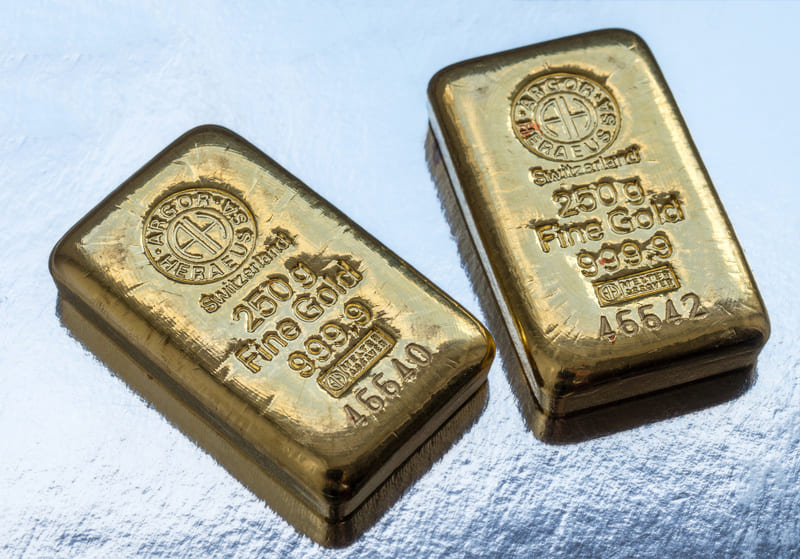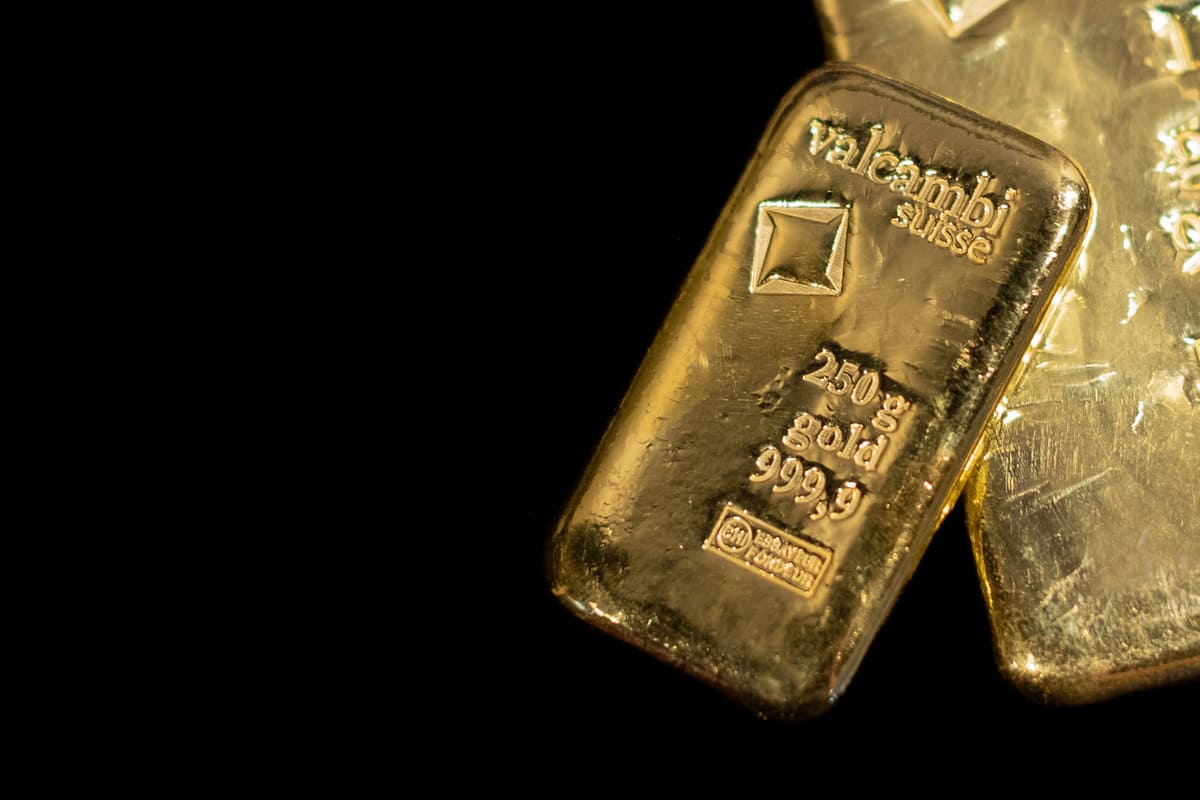Precious metal refineries are the link between the mines and the finished product
Additional information > The fundamentals of precious metals – a broad introduction to the basic principles > Precious metal refineries
Precious metals have been processed for thousands of years. Gold and silver served as a medium of exchange well into the 20th century, but now the focus is on jewellery, industrial and investment products. The finished product involves a complex process carried out by precious metal refineries. Switzerland’s smelting plants are among the largest in the world.
Gold is one of the first metals to be processed by human hands. Its extraction can be traced back to the early Chalcolithic Age. The oldest finds of gold artefacts come from Bulgaria and date from 4600 to 4300 BC. Gold is still valued today because of its worth, its beautiful sheen, and the fact that it is virtually imperishable. This precious metal is one of the natural deposits within the earth’s crust, from which it has to be extracted – either as gold ore, or (less commonly) as nuggets which have already been released from the rock.

© Björn Wylezich - stock.adobe.com
The earth’s crust contains around 30 billion tons of gold, and quantities of up to 2,600 tons are extracted annually. According to World Gold Council (WGC) estimates, the amount of gold mined worldwide to date is around 200,000 tons. China, Australia, Russia, the USA, Canada and South Africa mine at least half of all the gold produced globally. Depending on the type of deposit, gold is either extracted via open-cast mines or from underground mines. Located around 4,000 metres below ground, the world’s deepest gold mine is situated in South Africa.
However, the most important silver deposits are found in Mexico, China and Peru. Most silver is now extracted from ores which combine with lead, copper and zinc to form sulphides and oxides. Silver is now rarely found without some impurities – i.e. as a pure chemical element.
The world's gold is melted in Switzerland
Although Switzerland no longer has any significant deposits of precious metals, it does have five of the largest and most important refineries in the world. These are PAMP, Argor-Heraeus, Metalor, Valcambi and Cendres Métaux. Up to 70 percent of the gold produced globally is melted down and processed in these refineries. This places Switzerland at the centre of the international gold trade.
Here is an overview of the most important precious metal refineries in the world, and a brief description of the plants situated in Switzerland:
- Agosi (Pforzheim, DEU)
- Argor-Heraeus (Mendrisio, CH)
- Cendres + Métaux (Biel, CH)
- Emirates Gold (Dubai, ARE)
- Engelhard (Newark, USA)
- Heimerle + Meule (Pforzheim, DEU)
- Heraeus (Hanau, DEU)
- Johnson Matthey (London, GBR)
- Metalor (Neuchâtel, CH)
- Austrian Mint (Vienna, AUT)
- PAMP (Castel San Pietro, CH)
- Perth Mint (Perth, AUS)
- Rand Refinery (Germiston, ZAF)
- Tanaka-Kikinzoku (Tokyo, JAP)
- Umicore (Brussels, BEL)
- Valcambi (Balerna, CH)
Argor-Heraeus in Mendrisio, Ticino
The company was founded in 1951 as Argor S.A. in Chiasso in the canton of Ticino. It was named Argor-Heraeus in 1986 as a result of a merger with Heraeus from Hanau in Germany, which has controlled Argor since 2017. Nevertheless, its popular ingots are still produced in Mendrisio, Ticino under the name Argor-Heraeus. Gold bars weighing between one gram and one kilogram are produced for the investment market. Bars of up to 100 grams are minted, while those weighing 250 grams or more are cast. All products bear the company logo, high-resolution data, a serial number, and the word “Switzerland”. Argor-Heareus also manufactures silver, platinum and palladium ingots.

© vladk213 - stock.adobe.com
Cendres + Métaux in Biel, Bern
Cendres + Métaux Holding S.A. has existed since 1885 and was originally founded as a precious metal smelting company in Biel in the canton of Bern. After its merger with the Zanelli company, the group and its subsidiaries became well-known around the world. Cendres + Métaux produces cast and minted bars from precious metals in eleven different denominations, which are traded across Europe in particular. The company also manufactures products for dentistry, medical technology, and the watch and jewellery industries.
Metalor in Neuchâtel, Neuchâtel
Metalor Technologies International S.A. was created in 1852 by founder Martin de Pury and specialised in the preparatory rolling of gold. As early as 1864, the plant passed into the possession of the Banque du Locle, and was finally taken over by the Swiss Bank Corporation in 1936. Today the company is part of Japan’s Tanaka Kikinzoku Group. It refines gold and other precious metals, processing them as gold bars with weights of 1 to 1,000 grams. In addition, Metalor also produces precious metal pastes for industry and bars in custom specifications.
PAMP in Castel San Pietro, Ticino
Produits Artistiques Métaux Précieux (PAMP S.A.) is one of the world’s leading companies in precious metal processing. Established at Castel San Pietro in 1977, today’s company is part of the MKS-Finance group from Geneva, which began trading in 1979. PAMP processes around 450 tons of gold per annum, which is made into standard gold bars, coins and jewellery. Investment products weigh between 0.3 and 1,000 grams and usually bear the company motif. In addition, PAMP also produces 400-ounce gold bars for wholesalers, and the company also manufactures silver, platinum and palladium bars.
Valcambi in Balerna, Ticino
Valcambi from the canton of Ticino is by far the largest refinery in the world. Founded in 1967, this refinery, processes more than 2,000 tons of precious metal every year. The plant situated in Balerna is now owned by Global Gold Refineries, a group which belongs to Indian Rajesh Exports Ltd. Bars are manufactured from gold, silver, platinum and palladium, and these flawlessly minted products have an excellent reputation all around the world. CombiBars® (special bars with predetermined breaking points) are especially popular among investors, as well as products from the Green Gold series, which only use metals from strictly tested value chains. Valcambi also specialises in the testing, transport and storage of precious metals for industrial purposes.

© Jaanall - stock.adobe.com
The process of extracting gold in refineries
A maximum of three to five grams of raw gold can be extracted from one ton of gold-bearing rock. However, this requires a complex refining process, which takes place in several steps: Using steel balls, the ore is first ground and then separated from the powdered dust residue by chemical separation. Next, either aqua regia (made from a blend of nitric and hydrochloric acids) or chlorinated hydrochloric acid are used to dissolve the precious metal. The gold is finally released from the compound material mass by melt electrolysis or chemical extraction. This process yields industrial gold with a fineness of around 80 percent, which is then cast into bars weighing six kilograms.
During the actual gold separation process, other components present in the ore, such as copper and silver, are removed from the industrial gold and old, recycled gold is also added at the same time. Various processes are used to extract the fine gold – depending on the time expended and the purity required. Fineness levels of 995/1000 or 999.9/1000 are often demanded. Finally, the pure gold is once again cast into bars of different sizes. These are then used to create gold bars and coins.
The presence of recycled precious metals
Gold loses almost no value, even when it looks worn out. Old gold or dental gold can be melted down again and again and processed into new products. The same applies to gold coins once they are no longer tradeable. Every gram is used. However, a crucial requirement for sustainable gold recycling is that it should be recovered from previously paid-for products (jewellery, dental gold or investment gold). Up to 30 percent of the gold and platinum metals refined annually around the world currently comes from recycling. This is largely due to the high stock-to-flow ratio, which is based on the premise that all the gold ever mined is still in existence.
Gold extracted from electronic scrap also flows into new production, but does not meet the World Gold Council’s (WGC) strict guidelines. According to the narrowly drafted statutes of this international gold mining industry organisation, this recovery does not qualify as real precious metal recycling. Nevertheless, around 200 grams of gold can be extracted from one ton of old electronics or used circuit boards. Silver is less likely to be recycled this way, because its concentrated value is significantly lower and the process is too complex.
The primary demand comes from the jewellery industry
The largest amount of manufactured gold, almost 50 percent, is used for jewellery, followed by investment gold which consumes around 20 percent, and around 17 percent are held in stock by central banks. When it comes to silver, the white precious metal, the percentage share for jewellery and other silver goods also far exceeds other demands. Other areas of use include the automotive industry, electronics, dentistry and medical technology, textile manufacturing and the production of coins and bars for the investment and collector’s markets. Many precious metal refineries also process platinum and palladium.
LBMA certification for gold and silver bars
Some of the world’s largest refineries are located in Switzerland. These producers are also listed on the London Bullion Market Association (LBMA) “Good Delivery List”. Around 70 bar manufacturers currently have LBMA certification, which is only awarded in accordance with strict standards. In addition to general criteria such as market establishment, production volumes, and minimum capital, all gold and white-metal bars must meet precise manufacturing standards.
As well as product labelling, these standards relate to dimensions, weight and fineness. Good Delivery bars must have consecutive serial numbers, the stamp of the melting shop, a fineness expressed to four digits, and the year of production. However, the LBMA has no special seal of approval and manufacturers mostly use their own logos. LBMA certified refineries enjoy an exclusive reputation worldwide and their products are a guarantee of quality.
Summary of interesting facts about precious metal refineries
- Each year, around 2,600 tons of gold are mined worldwide. The mines with the greatest extraction volumes are located in China, Australia, Russia, USA, Canada and South Africa.
- Mexico, China and Peru have the most significant silver deposits.
- Five of the world’s most important precious metal refineries are located in Switzerland: Pamp, Argor-Heraeus, Metalor, Valcambi and Cendres Métaux. Valcambi, which processes around 2,000 tons of precious metal annually, is by far the largest refinery.
- Gold processing involves complex operations which include the use of old gold. Gold recycling accounts for around 30% of annual refining.
- Jewellery processing consumes by far the largest quantities of gold and silver. This is followed by investment products as well as the medical and industrial sectors.
- LBMA certified manufacturers produce precious metal coins and bars which are recognised and in demand all around the world.

